Spring brings forth blooms of plants that either remained dormant as a perennial or as the seeds of an annual and with this long cool spell dominating much of the USA spring has been reluctant to leave. Many plants are either blooming longer or waiting longer to leaf out. The wild violets such as the Bird Foot Violets below, one being an albino variant, are still blooming at a time I expected them to be gone by now. (Wouldn't this header photo make a great jigsaw puzzle?)
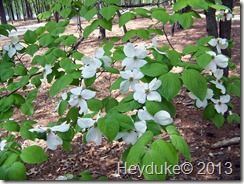 Even the Flowering Dogwoods are hanging onto their white flowers… but they aren’t really flowers at all. You see the dogwood flowers are actually quite small and inconspicuous and are not very showy at all. They are greenish and are in a cluster of 20 or so flowers that are surrounded by four conspicuous large white bracts or what appear to be the "petals" of the flower. A little tree trivia for those who are interested…
Even the Flowering Dogwoods are hanging onto their white flowers… but they aren’t really flowers at all. You see the dogwood flowers are actually quite small and inconspicuous and are not very showy at all. They are greenish and are in a cluster of 20 or so flowers that are surrounded by four conspicuous large white bracts or what appear to be the "petals" of the flower. A little tree trivia for those who are interested…
A couple of other interesting plants found in the southeastern forests are the Sassafras (below left) and the Muscadine Grape (below right). The Sassafras tree is well known to the native Americans. Easily identified by in 1-3 lobed leaves (mostly 3 lobed or mitten shaped) and even better by the smell you get when scratching one of the fine roots leaving the base of the plant. Boiling these young roots produces an oil called safrole which was used in the early days as a primary ingredient in root beer. So if you scratch the outer layer off the root and smell the root,it will smell just like root beer. It wasn’t until later that the FDA found that safrole caused liver damage and may cause cancer. One current use of sassafras is filé powder, also called gumbo filé, for its use in making gumbo in the Creole cuisine found in Louisiana.
The Muscadine Grape produces a thick skinned berry that can be eaten fresh, but is widely used in the south to make wines, juices, and jellies.The grapes are rich sources of polyphenols and other nutrients that have been studied for their potential health benefits. Primarily found in the southeast, North Carolina created a cultivar of Muscadine called scuppernong to use in making a dry red table wine. Many wines using these grapes however are sweeter than we personally prefer.
Some pretty but non-edible budding plants found in the sandy hills of the southeastern forest are several of the oaks. Many of the oaks when first leafing out in the spring have a very beautiful reddish color to the leaves. Above are two of the many that grow in this area. The one on the left with the very pointy leaves is one of the Red Oaks and the one on the right with spade shaped leaves is a blackjack oak. I just love the colors that can be found on their leaves this time of the year.
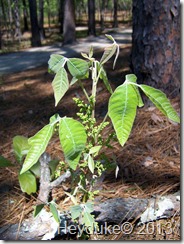 One plant that is not nice to see in the spring is Poison Ivy. Its counter part Poison Oak is the western equivalent. The one pictured here is Poison Oak which has similar leaves to the Poison Ivy but is more upright and has a woodier stem. The best thing to remember to avoid these plants is the old saying “Leaflets three – Let it be!” Not all plants with three leaflets are poisonous but if you don’t touch those that have three leaves you will not encounter the severe dermatitis that many experience after coming into contact with this nasty plant. All parts of this plant contain urushiol and the one pictured here also has it berries coming out which have a higher concentration of the oil.
One plant that is not nice to see in the spring is Poison Ivy. Its counter part Poison Oak is the western equivalent. The one pictured here is Poison Oak which has similar leaves to the Poison Ivy but is more upright and has a woodier stem. The best thing to remember to avoid these plants is the old saying “Leaflets three – Let it be!” Not all plants with three leaflets are poisonous but if you don’t touch those that have three leaves you will not encounter the severe dermatitis that many experience after coming into contact with this nasty plant. All parts of this plant contain urushiol and the one pictured here also has it berries coming out which have a higher concentration of the oil.
So although spring is a great time to wander around the woods looking for flora and fauna I guess we must remember not everything out there is worth experiencing…

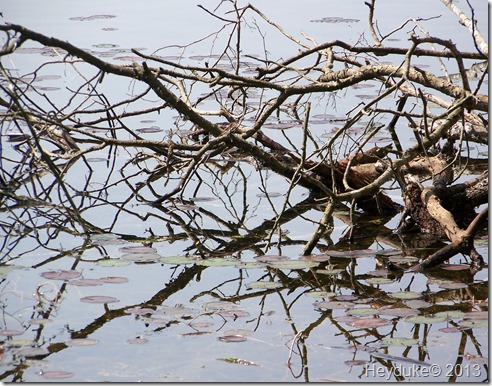
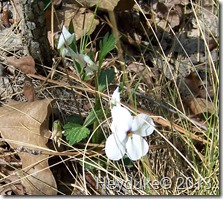
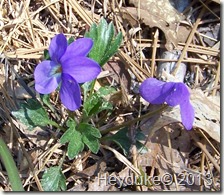
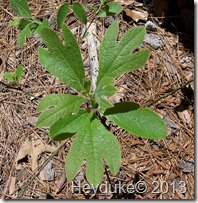
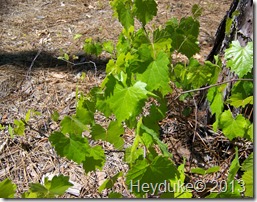
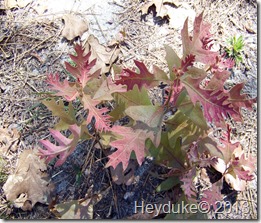
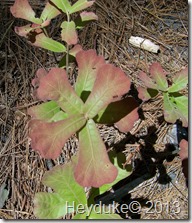
I'm relieved. Now I have a reason for not eating gumbo. Wouldn't want liver disease or cancer. ;)
ReplyDeleteLove those muscadine grapes. Just bite into those leather skins, spit them out and enjoy the sweetness. Or chew em' up if you like fiber. :-)
ReplyDeleteSure do love this springtime weather we are having too.
ReplyDeleteSuch beautiful plants sprouting up.
Thanks for bringing Spring to me through your lens. I kinda like the sweet muscadine wines myself. Could it be because I'm from NC? :-)
ReplyDeleteSyl